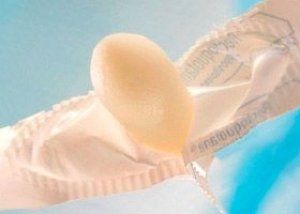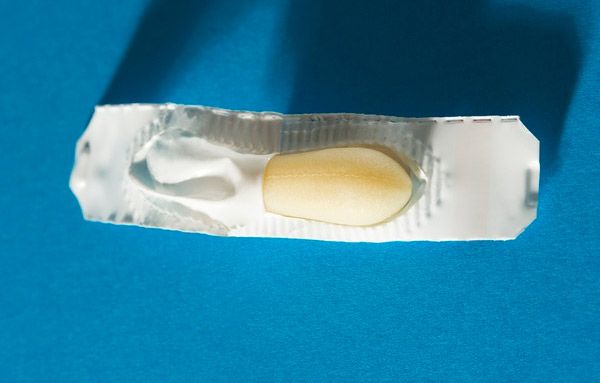
All iLive content is medically reviewed or fact checked to ensure as much factual accuracy as possible.
We have strict sourcing guidelines and only link to reputable media sites, academic research institutions and, whenever possible, medically peer reviewed studies. Note that the numbers in parentheses ([1], [2], etc.) are clickable links to these studies.
If you feel that any of our content is inaccurate, out-of-date, or otherwise questionable, please select it and press Ctrl + Enter.
Colpitis treatment with suppositories
Medical expert of the article
Last reviewed: 03.07.2025

Treatment of infectious inflammation of the vaginal mucosa includes, among other things, the use of local remedies, and doctors prescribe vaginal suppositories - suppositories for colpitis.
Indications for the use of suppositories for colpitis are various forms of colpitis (vaginitis), diagnosed on the basis of a bacteriological examination of vaginal discharge, which can be caused by staphylococci or streptococci (non-specific infection), trichomonads (Trichomonas vaginalis), gardnerella (Gardnerella vaginalis), Candida Albicans, Candida glabrata or Candida parapsilosis fungi.
Pharmacodynamics and pharmacokinetics of suppositories for colpitis
The active substance of Betadine suppositories is povidone-iodine, which is an antiseptic and a strong bactericidal substance that leads to the death of cells and spores of bacteria and protozoa. And in Chlorhexidine suppositories, chlorhexidine digluconate behaves in the same way.
The active substance of the suppositories Metronidazole is the antibiotic 5-nitroimidazole, which is effective against anaerobic bacterial and bacteroid infections, Gardnerella and Mobiluncus. By preventing the synthesis of nucleic acids in the cells of the DNA of microorganisms, the drug causes their death. Almost the same mechanism of action (at the level of damage to the DNA of microbial cells and Trichomonas cells) is found in suppositories Dalacin (which contain the antibiotic clindamycin), Neo-Penotran (metronidazole + miconazole), Serconazole and antiprotozoal suppositories Trichomonacid.
The pharmacodynamics of Gainomax suppositories for colpitis is due to two active components, tioconazole and tinidazole. The first disrupts intracellular metabolic processes at the level of cytoplasmic membranes of Candida fungi, and the second penetrates directly into the cells of Trichomonas and anaerobes and disrupts the amino acid sequence and replication of their DNA.
Nystatin is a polyene antibiotic that has a destructive effect on the water-electrolyte balance in Candida alb. Natamycin, the active substance of Natamycin suppositories, is also a polyene macrolide antibiotic. The drug also inhibits the synthesis of protein components in fungal cell membranes, stopping their reproduction. The action of nystatin in Macmiror suppositories is enhanced by a nitrofuran derivative, the synthetic antibacterial substance nifuratel, which disrupts the absorption of oxygen by microbial cells and leads to a complete loss of their viability.
The main component of Vagikal suppositories is calendula, which contains salicylic and pentadecyl acids, which have bactericidal properties against streptococcal and staphylococcal infections.
The pharmacokinetics of some vaginal globules have simply not been studied by manufacturers. Most of the active ingredients in suppositories for colpitis do not enter the bloodstream. However, after local use of Dalacin suppositories, about a third of a single dose of the antibiotic clindamycin enters the systemic bloodstream within three days, but its overall effect on the body, as experts note, is insignificant.
Metronidazole in Neo-Penotran suppositories is also absorbed into the blood in minimal amounts and completely excreted in the urine, but miconazole does not enter the systemic bloodstream at all.
Names of suppositories for colpitis
It is worth listing the main names of suppositories for colpitis, presented today on the domestic pharmaceutical market, in brackets are indicated the variants of trade names of drugs:
- Betadine (Iodoxide) antiseptic suppositories prescribed for non-specific colpitis, as well as for the candidal form of the disease.
- Metronidazole (Flagyl) antiprotozoal suppositories are used for colpitis, the etiology of which is associated with trichomonas and gardnellosis.
- Dalacin suppositories (Clindacin, Cleocin) belong to the lincosamide group of antibiotics and are effective against bacterial colpitis and vaginosis.
- Neo-Penotran is a combination drug against many types of microbial infections (including gram-positive microbes) and protozoa based on the antibiotic metronidazole and the antifungal drug miconazole.
- Sertaconazole (Zalain) (imidazole + benzothiophene), suppositories for fungal colpitis.
- Ginezol - suppositories with miconazole for candidal colpitis.
- Trichomonacid suppositories for the treatment of trichomonas colpitis.
- Gynomax suppositories can be used for various forms of colpitis, primarily those caused by non-specific infections and Trichomonas vaginalis.
- Chlorhexidine (Geksikon) is an antiseptic vaginal suppository used for non-specific, trichomonas, and mixed colpitis and vaginitis.
- Nystatin (Anticandin, Fungicidin, Fungistatin, Mycostatin, Nystafungin) is an antifungal agent, a polyene antibiotic.
- Macmiror – antifungal and antiprotozoal globules (nystatin + nifuratel).
- Natamycin (Pimafucin) antifungal suppositories with a polyene antibiotic.
- Vagikal bactericidal and anti-inflammatory phyto-suppositories.
Method of administration and dosage
All suppositories for colpitis are used intravaginally, that is, they are inserted into the vagina:
- Betadine, one or two suppositories per day, course of treatment is 7 days;
- Metronidazole – either once or twice a day (morning and evening), the course of treatment is 10 days;
- Dalacin one suppository per day (at night), the course of treatment is three days. Macmiror is used in the same way, but for a week. Trichomonacid one suppository per day for 10 days.
- Gainomax and Serconazole are used one suppository on the first day of treatment, and then a week later.
- Neo-Penotran, Ginezol and Natamycin suppositories are supposed to be administered one at night for 7-14 days (Natamycin – 3-7 days).
- Chlorhexidine globules are inserted into the vagina twice a day for a week or longer (as prescribed by the attending physician). And Vagikal is usually used 2-3 times a day (one suppository), and the duration of use does not exceed 10-12 days.
As stated in the instructions for these drugs, given their local use, overdose is unlikely.
Contraindications for use
Chlorhexidine and Betadine should not be prescribed in case of hypersensitivity of the body to the active substances of these products.
The use of Metronidazole and Neo-Penotran suppositories is contraindicated in cases of low levels of leukocytes in the blood and organic pathologies of the central nervous system.
Gainomax is not used in the presence of diabetes mellitus, as well as in the first trimester of pregnancy and during lactation.
The use of suppositories for colpitis during pregnancy depends on the specific drug. Thus, suppositories for colpitis Betadine, Metronidazole, Dalacin, Trichomonacid, Gainomax cannot be used by pregnant women. Genizol suppositories are not used in the first trimester of pregnancy, and Neo-Penotran in the second and third.
There is no information on the safety of Serconazole suppositories for pregnant women; Nystatin suppositories are allowed in the treatment of pregnant women only in case of extensive fungal infection of the genitals - under strict medical supervision. When prescribing Macmiror suppositories, the doctor should evaluate the ratio of the probable benefit for the pregnant woman with the degree of possible negative impact on the unborn child.
Chlorhexidine and Pimafucin suppositories have no contraindications during pregnancy.

Side effects
Side effects of Metronidazole suppositories may include urticaria and itching, vomiting and nausea, abdominal pain, increased dryness in the mouth, taste changes (metallic taste in the mouth), problems with the intestines and gallbladder. In addition, weakness, headache and dizziness are not excluded.
The use of Dalacin suppositories may be accompanied by irritation of the vaginal mucosa, itching and rash on the skin, the development of thrush, menstrual cycle and urination disorders.
Irritation of the mucous membranes is also observed in the case of using such vaginal suppositories as Trichomonacid, Gainomax, Chlorhexidine, Ginezol and Neo-Penotran. In addition, Neo-Penotran suppositories can cause headaches, dizziness, nausea, vomiting, abdominal pain, taste and stool disorders.
Interactions with other drugs
Gainomax enhances the effect of indirect anticoagulants (to reduce the risk of bleeding, the dose is reduced by 50%) and the effect of ethanol (disulfiram-like reactions). Compatible with sulfonamides and antibiotics.
Neo-Penotran suppositories are incompatible with the use of alcoholic beverages, and the parallel use of anticoagulant drugs may increase the blood clotting time. These suppositories cannot be used simultaneously with Cimetidine (Gastromet, Supramet, Ulceratil, etc.), which is used for exacerbation of gastric and duodenal ulcers, as this may cause serious side effects from the central nervous system.
Chlorhexidine is not used simultaneously with iodine.
Storage conditions
Nystatin suppositories should be stored in a place protected from light and moisture, at a temperature not exceeding +5°C. Metronidazole, Dalacin, Chlorhexidine, Serconazole, Macmiror, Neo-Penotran suppositories should be stored at a temperature of +18-25°C.
Shelf life: Metronidazole, Ginezol – 4 years; Dalacin, Macmiror and Neo-Penotran 3 years; Trichomonacid, Gainomax, Serconazole, Chlorhexidine for 24 months.
Attention!
To simplify the perception of information, this instruction for use of the drug "Colpitis treatment with suppositories" translated and presented in a special form on the basis of the official instructions for medical use of the drug. Before use read the annotation that came directly to medicines.
Description provided for informational purposes and is not a guide to self-healing. The need for this drug, the purpose of the treatment regimen, methods and dose of the drug is determined solely by the attending physician. Self-medication is dangerous for your health.


 [
[